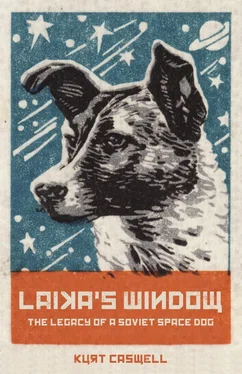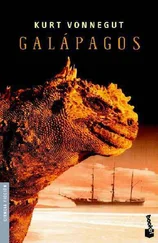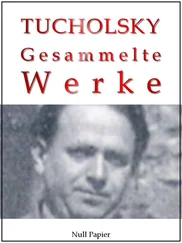The Soviets called their satellite Prosteyshyy Sputnik-1 (Simplest Satellite-1) or PS-1 . The world came to know it as Sputnik , the Russian word for “satellite,” or more precisely “traveling companion” or “following companion.” When an object achieves orbit, it becomes a satellite, for the word “satellite” defines any body in orbit around another. In the Middle Ages “satellite” was used for a person who follows another person superior in rank or status. Astronomers took control of the word in the early days of astronomy, using it to describe natural bodies in orbit, like Earth’s moon, which is a satellite. The successful launch of Sputnik I demanded a distinction between artificial satellites and natural satellites. Soon the word “satellite” fell out of popular use for natural bodies and came to mean “artificial satellite,” almost exclusively. Now the moon is just a moon.
Satellites do not generally follow a circular path around the Earth but rather elliptical paths of varying degrees, just as the Earth and the other planets in our solar system follow elliptical paths around our sun. Perigee is the distance of a satellite at its closest point to the Earth, and apogee is the distance at its farthest point. A satellite’s orbit can change over time too, especially if its perigee is low enough that it drags in the upper atmosphere. Eventually, such atmospheric resistance will bring the satellite down. The International Space Station (ISS), in low-Earth orbit, has a perigee of about 254 miles and an apogee of 258 miles, not much of an elliptical path at all. It is moving very fast, at about 17,500mph, and makes one lap around the Earth every ninety minutes. For comparison, some satellites are in highly elliptical orbits (HEO), somewhere around 600 miles at perigee and over 22,000 miles at apogee. Such satellites spend most of their time moving out to and back from apogee, giving them a longer dwell time over a specific region of the Earth. Nations in extreme northern and southern latitudes often place communications (and other) satellites in HEO. The technique was pioneered by Russian engineers out of necessity, as theirs is a nation with a great deal of landmass in the far north. Weather satellites are placed into geostationary orbits (GEO), which means they orbit at a bit more than 22,000 miles from the Earth. At this distance the satellite’s speed matches the rotation of the Earth, and so, despite the fact that it is moving really fast, from the ground it doesn’t look to be moving at all. Still farther out, the moon has a perigee of 226,000 miles and an apogee of 252,000 miles. In its orbit around the sun, the Earth with all its satellites in tow, natural and artificial, has a perihelion ( helios from the Greek for “sun”) of 91.4 million miles and an aphelion of 94.5 million miles.
Sputnik I was a small satellite, a polished metal sphere only twenty-three inches in diameter (a bit more than double the size of a basketball), with four antennas positioned equidistant from each other at their base, canted and pointed back, all in the same direction. Launched on October 4, 1957, Sputnik I broadcast a beeping signal at 20.005 and 40.002 megahertz, easily picked up by government and amateur radio operators worldwide. After twenty-one days, its batteries ran down, and Sputnik I went silent, but it continued to orbit for two more months, most of that time concurrently with Sputnik II .
Premier Khrushchev, on his way home from vacation on the Black Sea—a region of splendid beaches and picturesque mountains still coveted as a vacation spot by Russia’s elite, including President Vladimir Putin—stopped in Kiev to take in news of the launch. He was impressed by the technological feat of Sputnik I , but then there were many technological feats. He did not understand the satellite’s importance until the next day when the world responded. In his essential book Sputnik: The Shock of the Century , Paul Dickson reports that newspapers, TV news, scientists, politicians, practically everybody congratulated the Soviet Union, heralding the event as one of the world’s greatest scientific achievements. It was also lauded as a propaganda stunt to advance the Soviet Union’s position in the world, one that worked most effectively. All over the world people turned out by the millions along the path of the satellite to watch it pass overhead. Millions more picked up its now iconic signal—“beep, beep, beep, beep”—on ham radios or listened to its signal broadcast on a local radio station. Dickson reports that British physicist Sir Bernard Lovell called Sputnik I “about the biggest thing that has happened in scientific history.” And the British science fiction writer Sir Arthur C. Clarke, who also holds his own as a science writer, called the satellite “one of the greatest scientific advances in world history” and announced that it would have “colossal repercussions.”
As a young man, Gil Moore, an American rocket engineer who worked on the Viking and Aerobee projects that were later modified and became the first two stages of the navy’s Vanguard launch vehicle, saw Sputnik I pass overhead in the night sky. Now in his early nineties and wearing a black patch over his left eye, he told me the story sitting at his kitchen table in his Colorado home:
All the people who said they saw Sputnik I are incorrect. The final rocket stage was a great big long cylinder, and it was also in orbit. You could see it tumbling end over end as it reflected light from the sun. People who saw that thought they saw Sputnik itself, but they didn’t. Sputnik was too small to see with the eye. It was the final stage of the rocket that people saw. We were standing outside our home near Las Cruces [New Mexico], my wife and I. And when that sucker came over, my mind was blown. Because here was this enormous flashing coming overhead, and there was no sound. This thing was totally silent. I was not listening to the beep, beep, beep. To me, Sputnik was eerily silent. I thought, oh man, that is an ICBM, the basic launch system. And I thought, those suckers can drop bombs right on our heads. So yeah, yeah we saw it come over. And it was really quite a sight in the sky.
Norm Augustine, former chairman and CEO of Lockheed Martin, told me he was in his first week of graduate school in aeronautical engineering when someone walked up to him and announced that the Soviets had just launched a sputnik. His response was, What’s a sputnik? Then, Augustine said, “upon learning the answer, coming as it did at the height of the Cold War, it was like a blow to the gut.”
Beyond its military applications, the push to get a satellite into orbit was a science project, part of a global scientific cooperative called the International Geophysical Year (IGY), which ran from July 1, 1957, to December 31, 1958. Scientific collaboration between the USSR and the United States was impossible under Soviet premier Joseph Stalin, but his death in 1953 changed that. Sixty-seven countries took part in experiments and advancements in eleven areas of Earth science, including cosmic rays, geomagnetism, gravity, ionospheric physics, meteorology, and solar activity. The timing for such a global collaboration was ideal, because it encompassed the peak of Solar Cycle 19, a roughly eleven-year cycle of changes in the sun’s activity. Solar cycles are numbered starting in 1755 but have been reconstructed back to the beginning of the Holocene, which marks the end of the most recent ice age. As much as the IGY was about collaboration, it was also highly competitive, especially between the USSR and the US. Both countries announced that they would put an artificial satellite into Earth orbit during the IGY, but no one thought the Soviets could do it, and especially not do it first. No one had any idea the Soviets were so far along in their rocket and missile program, Moore told me, because “at the time, the Soviets were incredibly secretive about their work. We knew nothing about it in those days.” The perception was that the US would lead the way into space, because the Soviets were still fastened to the previous century, just a nation of poor farmers and laborers suffering through relentlessly cold winters. When “the USSR announced that they were going to join the IGY,” Moore said, “scientists and engineers in the US mocked them. We thought they didn’t know anything. And then they put up Sputnik .”
Читать дальше












